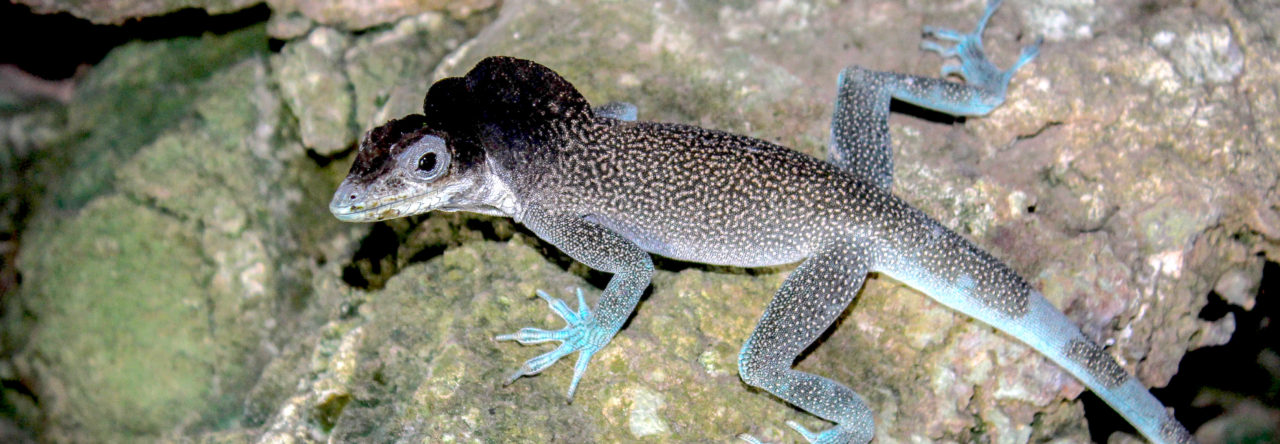In their recent paper on home range of A. equestris, Nicholson and Richards reported on a knight anole consuming a migrating blue-gray gnatcatcher. Here are the full details, in the words of Paul Richards:
“Kirsten Nicholson and I were attempting to resight one of our radio transmitter equipped A. equestris. Resighting transmitted individuals was difficult as they are hard to see even when we have a clear signal. We would regularly spend 15-20min search, and have a 50% change of resighting a transmitted individual (or less, I cannot remember – but we can probably estimate this from our notes). I saw a Blue-gray gnatcatcher land on a branch right in our general search area that was about a 2m diameter zone of the canopy of a small tree at about 3-5m height. I looked away continuing the search and seconds later I heard an alarm call, looked back to the spot and saw the A. equestris in the picture with the bird in its mouth. This A. equestris was unmarked, and I do not recall ever resighting the transmitted individual that we detected in the area. We can check our notes but I think it took at least 20min for this A. equestris to finish eating the gnatcatcher. I recall in using the branch to wipe/swipe its jaw across, one side the the other, repeatedly, to help get the bird in its mouth.”
- Evolution in Real Time on Lizard Island - March 23, 2025
- Spider Snags Adult Anolis osa - March 22, 2025
- An Homage to the Green Anoles of New Orleans - March 21, 2025



Martha Munoz
Anoles have ended up into too many bird beaks for me to have any sympathy. But seeing as how A. equestris is the non-native species here, I think I should actually be siding with the poor little bird.
Rich Glor
Amazing photo and story!
J James
Whoa!
Pat Shipman
Wow! An amazing shot.
L abbott
I’ve seen green anoles commit canibalism here in Georgia two of them of the same size trying to swallow each other is a common sight around here